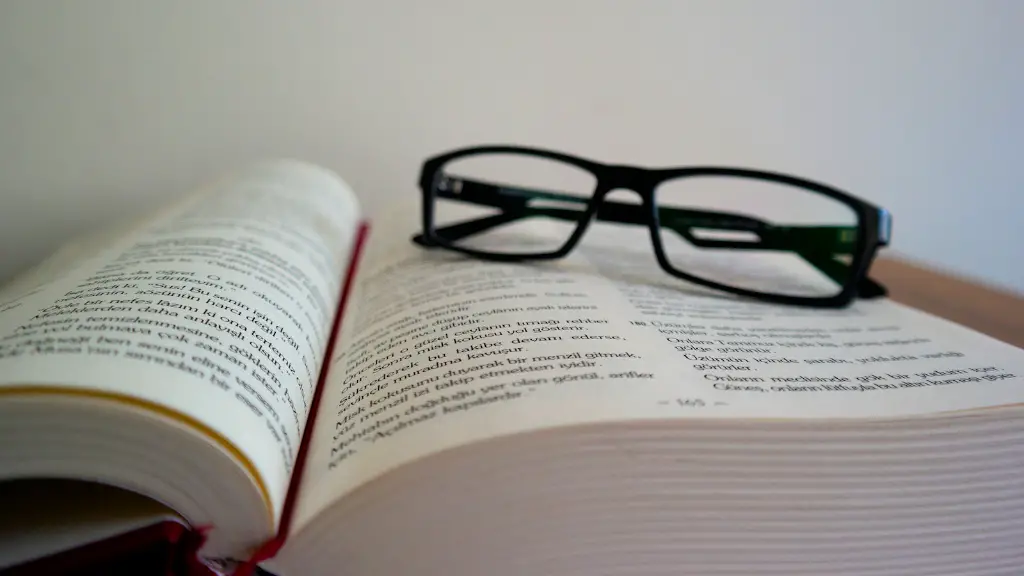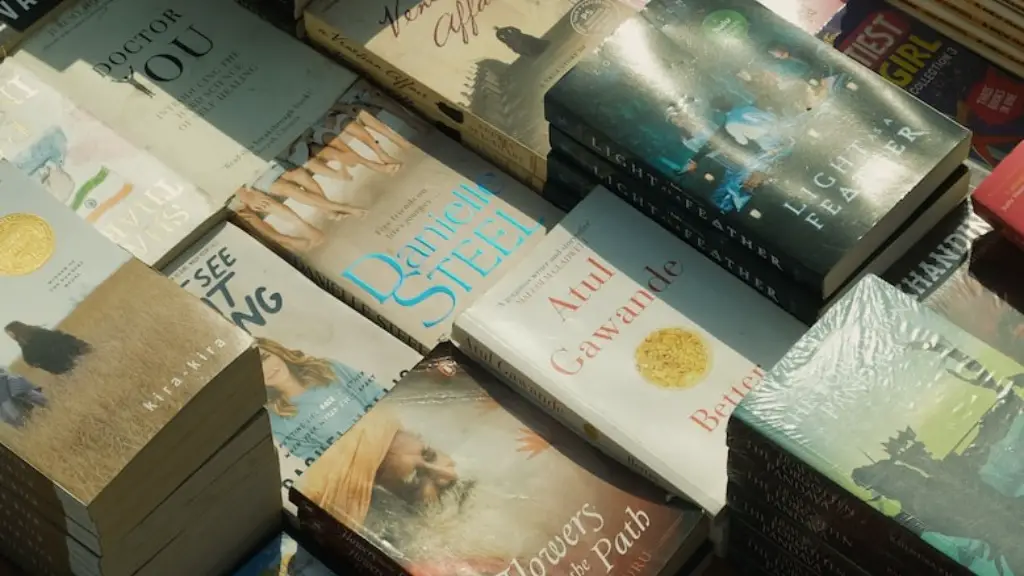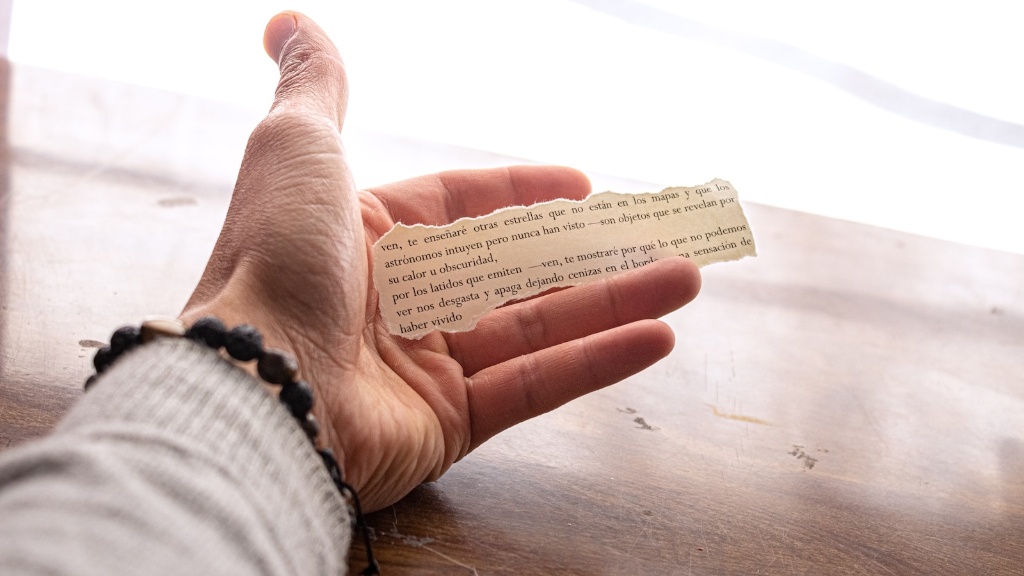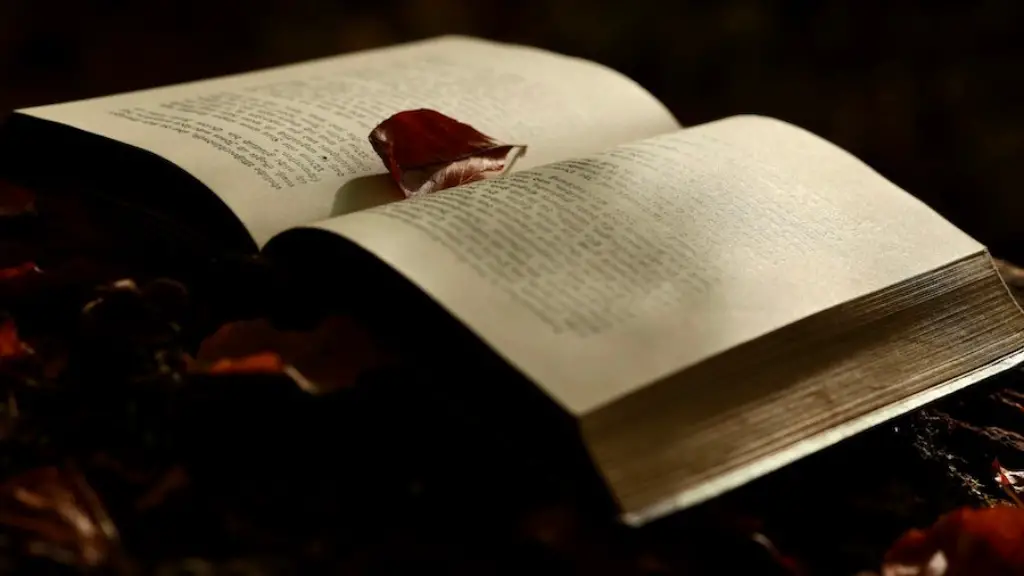A syllable is a unit of sound in a language or a written text. In poetry, a syllable is a recognizable unit that can be spoken or written. A syllable consists of one or more letters and usually contains a vowel sound, usually at its peak. Syllables make up the words, lines and stanzas of a poem and help provide the structure and overall style of the poem.
In general, a syllable is made up of an onset, nucleus, and a coda which make up the core of a syllable. The onset is the beginning of a syllable, and the nucleus is the sound that forms the core of the syllable, typically a vowel. The coda is the end of the syllable and often includes a consonant sound. In a poem, the length and stress of the syllables often determine the verse form, the metre and rhythm of the poem.
Different languages and cultures use different syllable forms, which affects the way poetry is written and read in different language. For example, English is known as a stress-timed language with distinct syllabic patterns, while French is considered to be a syllable-timed language with more even emphasis on each syllable.
When writing a poem, writers may use rhythm and meter to structure their poem. By counting syllables in a line of poetry, writers can ensure that the poem maintains a steady rhythm. In a metric verse, the lines are required to have the same number of syllables and these units of sound, help to ensure that the poem follows a certain meter.
Poets often use alliteration and assonance, which are both based on syllabic patterns, to create rhythm and sound effects within their work. Alliteration is the repetition of the same initial consonant sound in a phrase or line of poetry, while assonance is the repetition of similar vowel sounds in a phrase or line of poetry.
In addition to using syllables to create rhythm and structure, writers may also use the number of syllables to create imagery, rhyme and alliteration. For example, a poet may use a single-syllable word to create a sharp, abrupt image, whereas a longer, multisyllabic word might be used to create a more flowing, lyrical image. Similarly, a poet might use opposite sounding words to mark the end of a line to create a rhyme.
In conclusion, syllables are an essential element in poetry and writing. They help to set the tone and rhythm of a poem and create sounds and images that give the poem its character and style.
Rhyme
Rhyme is an important literary device used to give poetry structure and add musicality and rhythm. Rhyme is the repetition of the same sound at the end of the words in a line, verse or stanza of a poem. Rhymes may be end rhymes, which are words at the end of the line, or internal rhymes, which are words within the line.
The most common type of rhyme is end rhyme, which is the repetition of the same sound or group of sounds at the end of two or more lines in a poem. End rhymes are often used to close a line and to create a pattern in a poem. End rhymes help to create structure, flow and meaning in a poem by connecting related ideas or images. End rhyme also helps to give the poem a musical quality, making it more pleasing to read.
Internal rhyme is another type of rhyme that occurs within the line of a poem. Internal rhyme is when two or more words within a line have the same sound. This type of rhyme helps to establish rhythm and flow, making the poem more enjoyable to read. Internal rhyme can also be used to create a poetic effect in the poem and to create an image in the reader’s mind.
Syllabic rhyme is a type of rhyme in which poets use words of equal syllable counts. Syllabic rhyme helps to create a pattern in a poem, as the poets use words of equal syllable counts to create a certain effect.
Meter
Meter is the regular rhythm of stressed and unstressed syllables in a line of verse. Meter helps to create structure in a poem and to establish flow. It also helps to create a certain rhythm and tone to the poem. Meter is usually described as a “beat” or a pattern of sound.
In traditional English poetry, meter is usually divided into two categories: iambic and trochaic. Iambic is a type of meter in which the unstressed syllable is followed by a stressed syllable. This type of meter is often used in Shakespearean sonnets and is also used in spoken English. Trochaic meter is the opposite of iambic meter and is used only in poetry and not in spoken English.
Many poets also use a type of meter called Free Verse. Free Verse is the term used to describe poetry that does not follow a strict meter or rhyme scheme. Free Verse poetry is usually characterized by the lack of rhyme or meter, but often has internal rhyme, alliteration, assonance and imagery. Free Verse poetry is often described as being more lyrical and expressive than poetry that follows a strict meter or rhyme scheme.
Form
Form is the structure of a poem and includes the rhyme scheme, meter, number of lines, stanza length and style. It is made up of various elements of the poem and helps to create a distinct style and tone.
The most common form of poetry is the sonnet, which is composed of fourteen lines and composed in iambic pentameter—five metrical feet composed of an unstressed syllable followed by a stressed syllable. Another common form of poetry is the haiku, which is a Japanese form of poetry composed of three lines and seventeen syllables. The haiku is usually composed in a 5-7-5 syllable pattern.
One of the most popular forms of poetry today is free verse. Free Verse is a type of poetry that does not follow a strict structure or meter and does not contain a regular rhyme scheme. It is typically composed of lines or stanzas of varying lengths and often contains internal rhyme, alliteration, assonance and imagery.
Figures of Speech
Figures of speech are common devices used by poets to convey meaning and create sound effects. Figures of speech often use metaphors, similes, hyperbole, personification and other devices to create vivid images and give a poem its character and style.
Metaphors are figures of speech that compare two unlike things without using the words “like” or “as.” Metaphors help to create emotion and create vivid images that help the reader to better understand the poem.
Similes are similar to metaphors, but use terms such as “like” or “as” to make a comparison. Similes also help to create vivid images in the reader’s mind and evoke emotion in the poem.
Hyperbole is a figure of speech that uses exaggeration or overstatement to make a point. Hyperbole is used to create emphasis and to create a humorous or dramatic effect.
Personification is the figurative language in which something non-human, such as an animal or object, is given human qualities and emotions. Personification helps to create vivid images and also adds a sense of emotion and feeling to the poem.
Sound Effects
Sound effects are devices used by poets to create a certain atmosphere and to add emphasis to their work. Sound effects such as rhyme, alliteration, and assonance, help to give the poem a musical quality and make it more enjoyable to read.
Rhyme is the repetition of the same sound at the end of two or more words. Rhyme helps to create rhythm and structure in a poem, as well as creating a musical quality. Alliteration is another sound effect in which the same consonant sound is repeated at the beginning of two or more words. Alliteration helps to create a strong, emphatic effect and adds emphasis to a line of poetry.
Assonance is another sound effect in which the same vowel sound is repeated throughout a line or stanza of a poem. Assonance helps to create musicality and rhythm to a poem. It also helps to create a certain atmosphere and emotion to the poem.
Sound effects are often used by poets to add emphasis and to create vivid images in the reader’s mind. They also help to create rhythm and structure and to give the poem its character and style.





